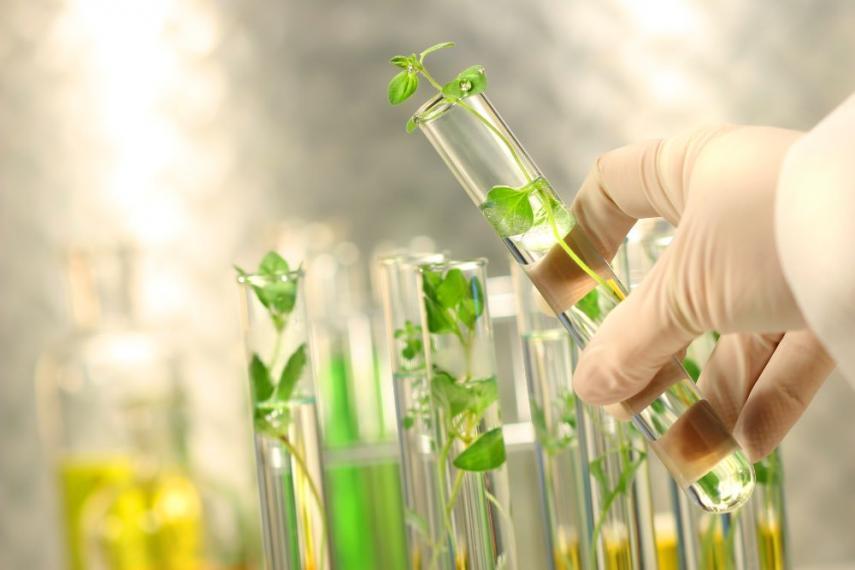Catalysts for Change

U of G researchers are exploring chemical methods that will reduce our reliance on fossil fuels.
From melting polar ice caps to devastating natural disasters, we are feeling the impacts of global warming. Unfortunately, rising carbon dioxide (CO2) in our atmosphere, which leads to global warming, is a by-product of items that we depend on. Most crude oil and gas are burned as fuel and just under 10% of it is used in the chemical industry. Replacing this fraction by producing petrochemicals such as plastics, Nylon and polyester fibres, polyurethane foams, coatings, paints, and pharmaceuticals from a renewable and sustainable carbon source would help alleviate global warming.
University of Guelph chemistry professor, Marcel Schlaf, PhD student Maryanne Stones, and their team are turning to biomass material to do the job. Plants, woods, and waste could be viable alternatives to fossil hydrocarbons. The challenge, however, is that nearly every carbon atom found in biomass-based molecules is connected to an oxygen atom. To produce the compounds that form the building blocks of resources like plastics, a chemical reaction that separates the carbon from the oxygen is required. That is where catalysts come in. Catalysts are substances that increase the rate of chemical reaction without undergoing permanent chemical change themselves. In biomass conversion, scientists and engineers typically rely on heterogeneous catalysts, which are solids, as opposed to the reactants, which are liquids or gases. The problem is that the reactions that are required in biomass conversion often rapidly deactivate these solid catalysts by irreversibly modifying their surface. That challenge is what motivated the U of G researchers to test homogeneous catalysts. The researchers conducted experiments in which they used soluble metal complex salts as a catalyst to convert organic, biomass-derived molecules into a renewable alternative to petrochemicals. They found that using a homogenous catalyst can result in a higher yield of the desired renewable chemicals.
“Homogenous catalyst systems have been relatively unexplored for this purpose,” explains Schlaf. “Although there are still substantial challenges associated with homogeneous systems, our experimental study shows that high-value compounds have the potential to be produced at a large scale through renewable chemical processes employing homogeneous catalysts.”
This work was supported by the Canadian Natural Science and Engineering Research Council (NSERC) Discovery and the Ontario Ministry of Agriculture, Food and Rural Affairs (OMAFRA) Bioeconomy Research programs.
Stones MK, Banz Chung EM, da Cunha IT, Sullivan RJ, Soltanipanah P, Magee M, Umphrey GJ, Moore CM, Sutton AD, Schlaf M. Conversion of Furfural Derivatives to 1, 4-Pentanediol and Cyclopentanol in Aqueous Medium Catalyzed by trans-[(2, 9-Dipyridyl-1, 10-phenanthroline)(CH3CN) 2Ru](OTf) 2. ACS Catal. 2020 Jan 30. doi: 10.1021/acscatal.9b05055.